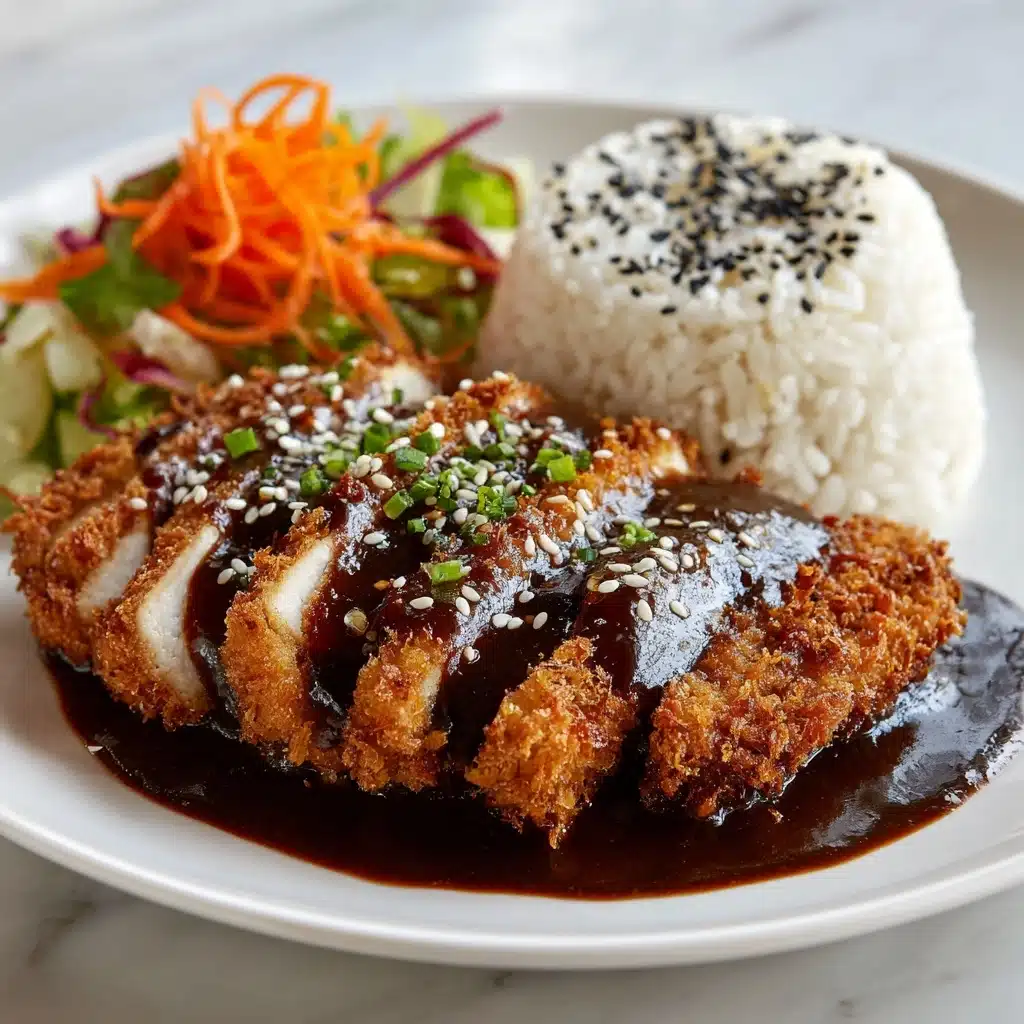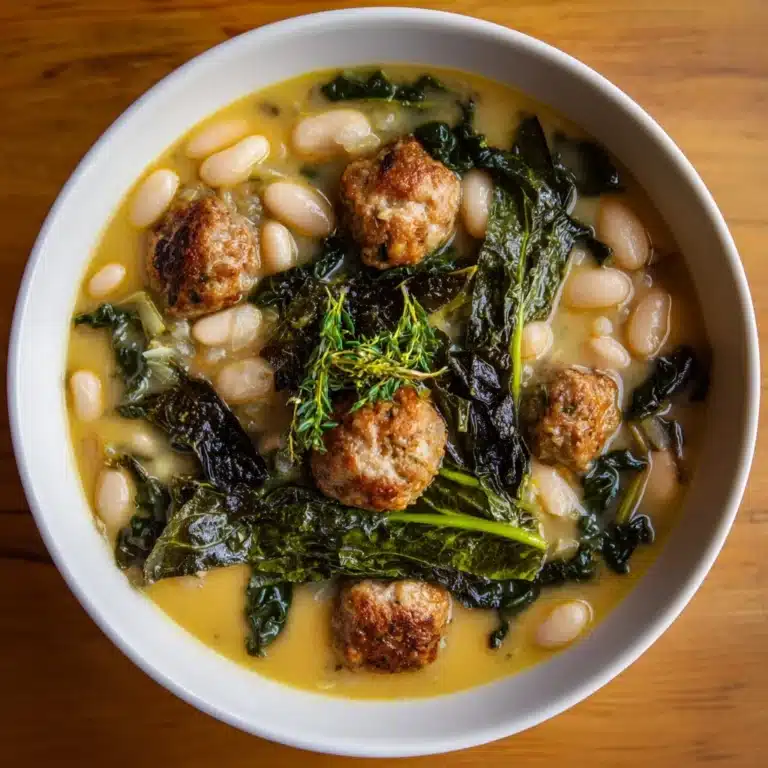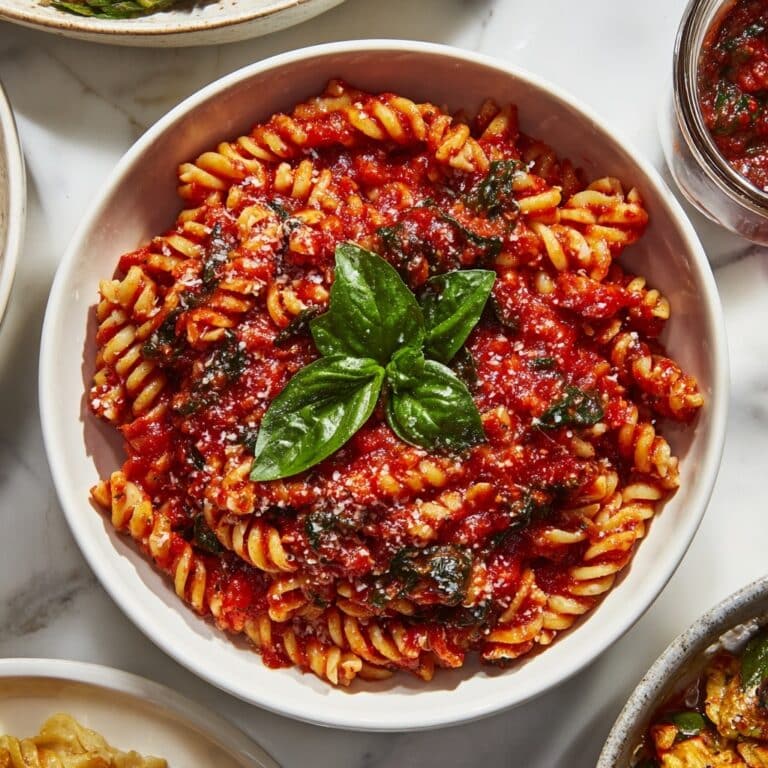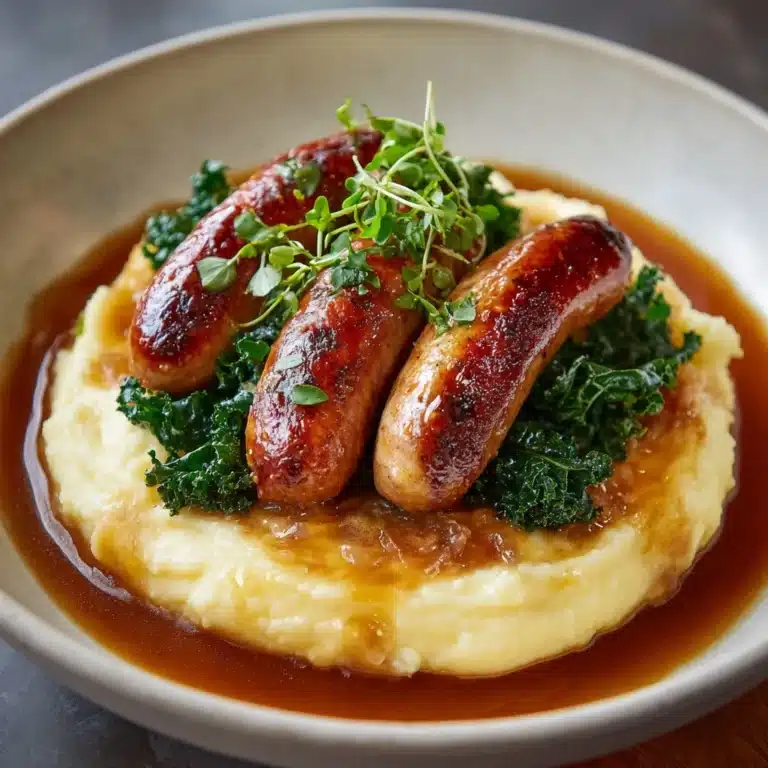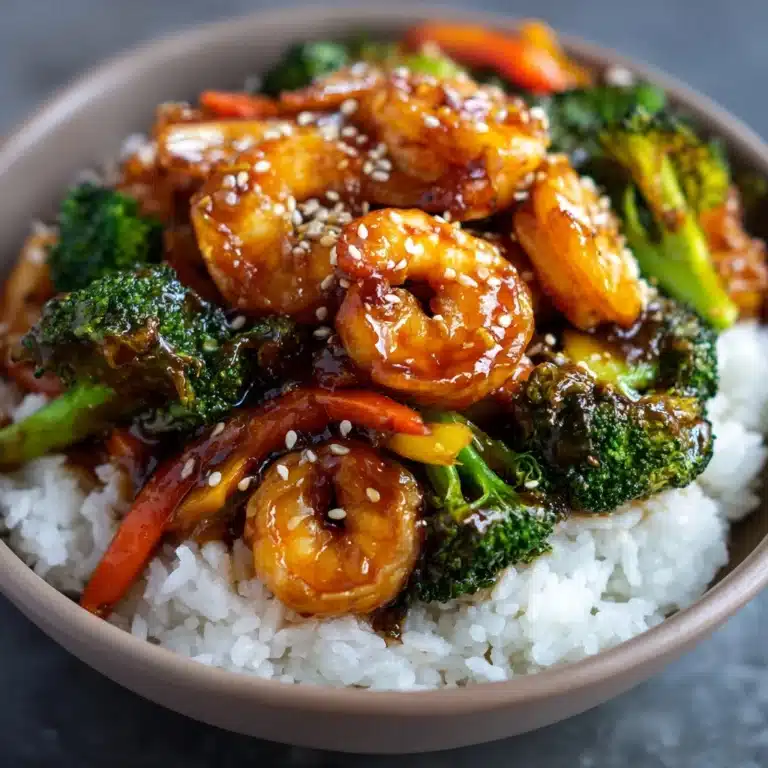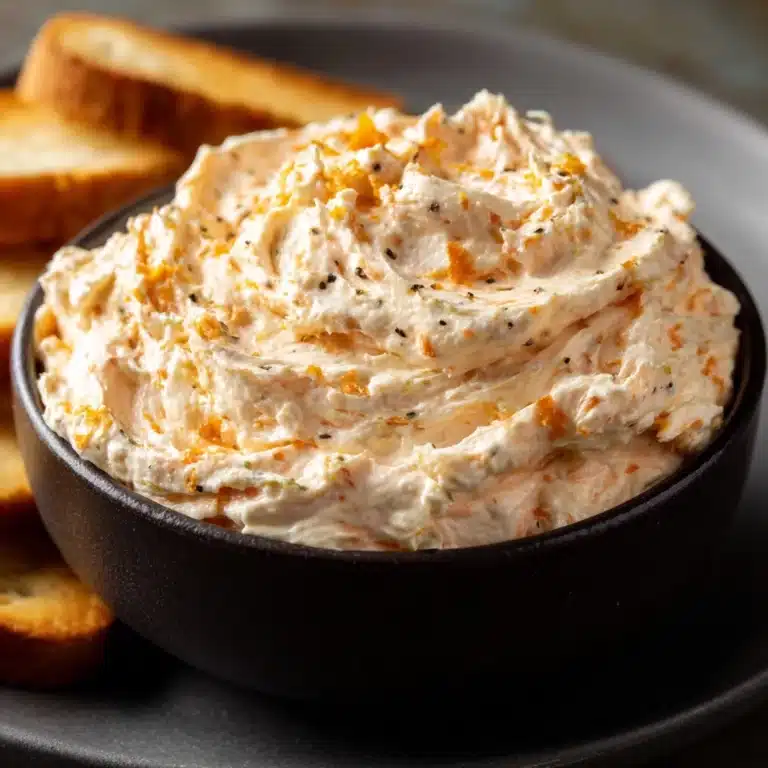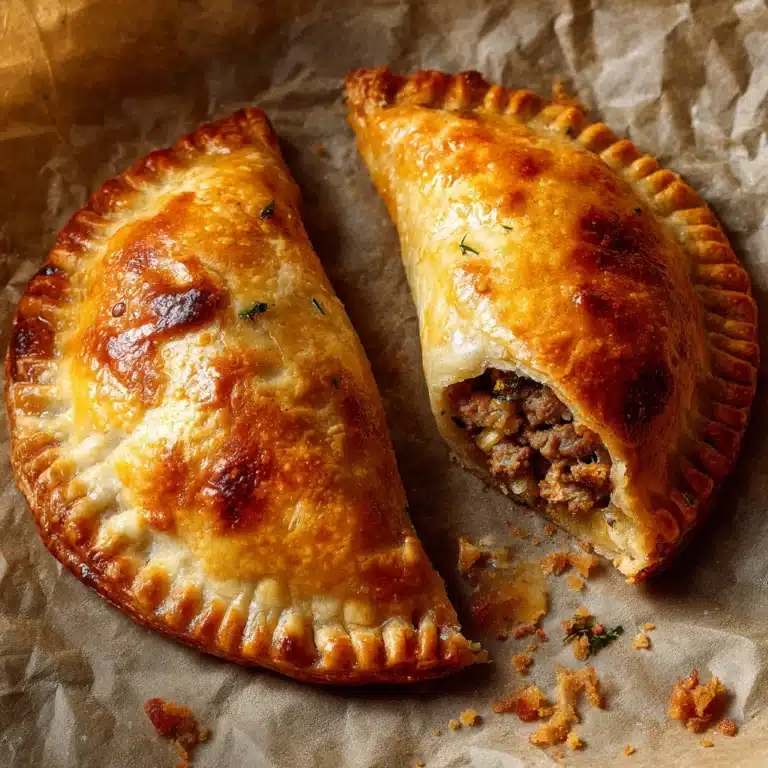Golden, shatteringly crisp on the outside and juicy within, this Chicken Katsu Recipe is Japanese comfort food at its most satisfying. Picture tender chicken breasts cloaked in airy panko breadcrumbs, fried to a deep golden hue, then sliced into strips you can swipe through tangy-sweet tonkatsu sauce. Simple rice and cabbage round things out for a meal that’s both unfussy and deeply crave-worthy. If you need a go-to recipe for crispy chicken cutlets that thrill every time, this is it!
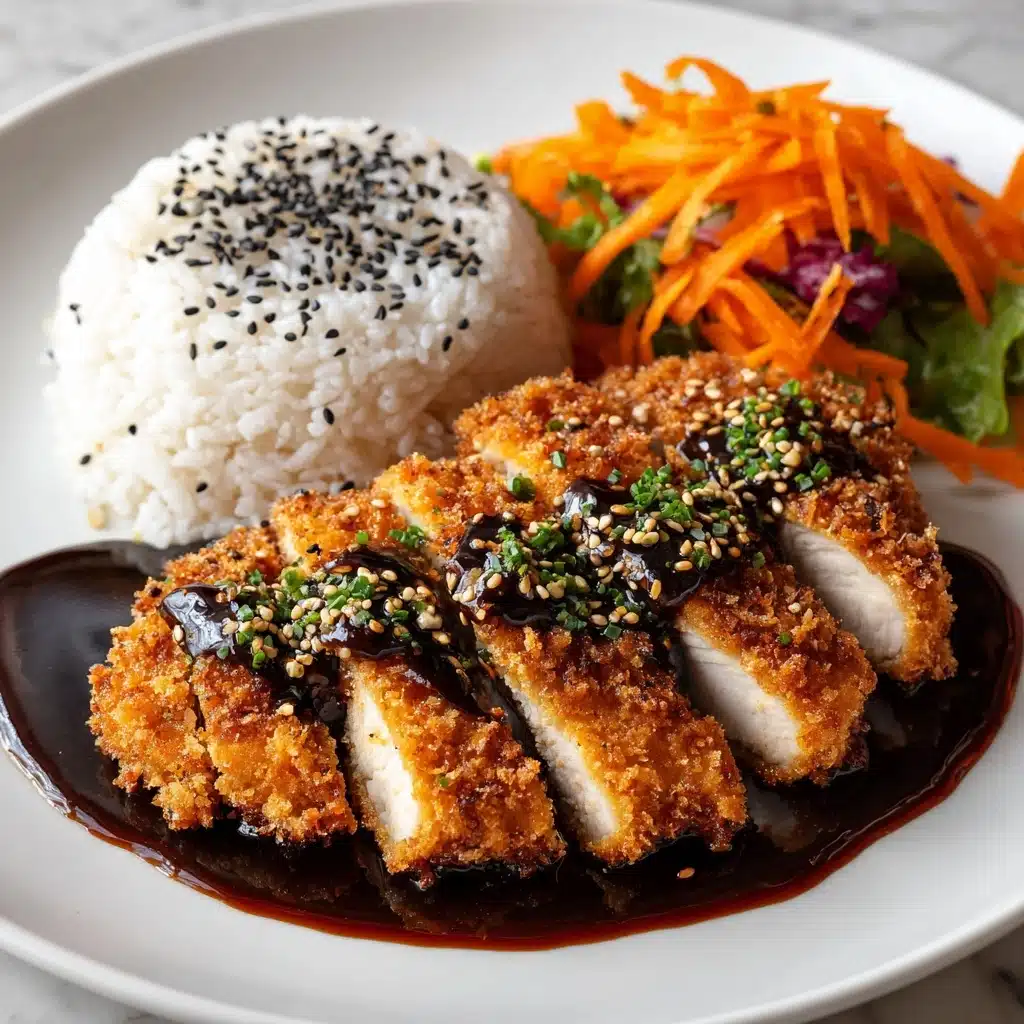
Ingredients You’ll Need
With this Chicken Katsu Recipe, you only need a handful of easy-to-find ingredients, each one playing a starring role in flavor or texture. It’s the little details — panko for crunch, eggs for coating — that turn simple into spectacular.
- Chicken breasts: Pound them to an even thickness for tender, quick-cooking cutlets every time.
- Salt and black pepper: Season generously to highlight the chicken’s savory flavor.
- All-purpose flour: Helps the egg stick and creates that signature katsu crust.
- Eggs: Whisked eggs give the panko a perfect base to cling to.
- Panko breadcrumbs: These airy, flaky Japanese breadcrumbs are the secret to that extra crispy shell.
- Vegetable oil: You want an oil with a high smoke point for golden, even frying.
- Cooked white rice: The classic side, offering a fluffy, neutral base that lets the chicken shine.
- Tonkatsu sauce: Sweet, tangy, and a little savory, this classic condiment is a must for genuine Chicken Katsu Recipe flavor.
- Shredded cabbage (optional): Crisp cabbage brings a refreshing crunch and balance to every bite.
How to Make Chicken Katsu Recipe
Step 1: Prep the Chicken
Start by laying your boneless, skinless chicken breasts between two sheets of plastic wrap or parchment and gently pounding them to about 1/2-inch thickness. An even thickness ensures juicy, consistent frying — plus, it makes every bite as tender as can be.
Step 2: Season Generously
Sprinkle both sides of your chicken with salt and black pepper. This simple step may seem small, but it amplifies every savory note as the cutlet cooks.
Step 3: Dredge and Coat
Set up your breading station with three shallow bowls. Add flour to one, whisked egg to the next, and panko breadcrumbs to the last. Dredge each breast in flour first, gently tapping off any extra. Dip it into the egg, making sure it’s completely coated. Then press into the panko, patting with your fingers to help every crumb adhere for ultimate crunch.
Step 4: Fry to Golden Perfection
Pour about 1/2 inch of vegetable oil into a large skillet and heat it over medium-high until shimmering but not smoking. Fry the chicken in batches, taking care not to overcrowd the pan, 3–4 minutes per side. You want each cutlet deeply golden and cooked through, with a wickedly crisp exterior and a juicy interior.
Step 5: Drain and Slice
Once golden, transfer the chicken to a paper towel-lined plate so any excess oil drains away. Let the cutlets rest for a couple minutes, then slice them into neat strips for that unmistakable Chicken Katsu Recipe presentation.
Step 6: Plate and Serve
Serve your chicken katsu over a bed of fluffy white rice, drizzle with tonkatsu sauce, and top with a heap of crunchy shredded cabbage if you’d like. Each component works together for a beautifully balanced meal.
How to Serve Chicken Katsu Recipe
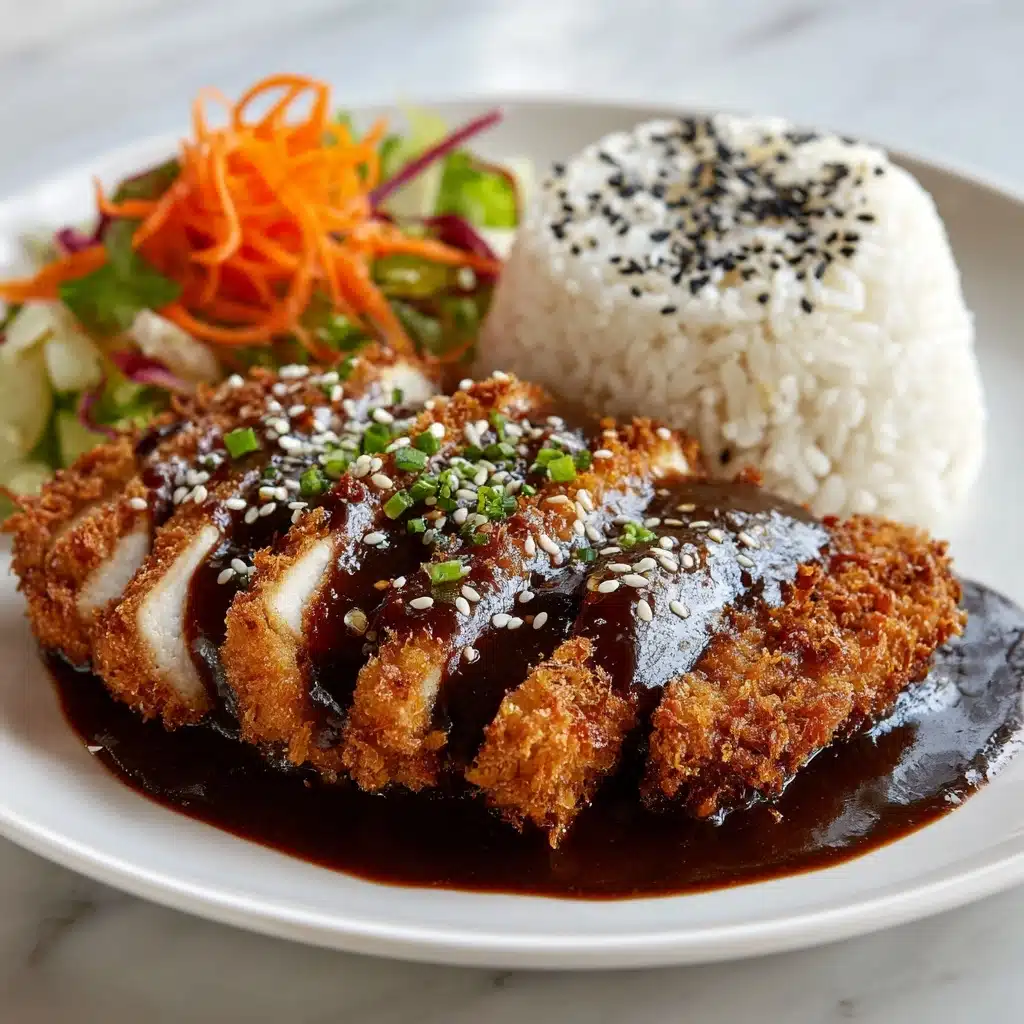
Garnishes
Nothing finishes off a Chicken Katsu Recipe quite like a little garnish. A fluffy pile of finely shredded cabbage is classic, and a scattering of sliced scallions or a sprinkle of toasted sesame seeds adds a pop of color and flavor. You can even add some pickled ginger on the side for a zesty twist!
Side Dishes
Pair your chicken katsu with steamy white or short-grain Japanese rice — it’s the perfect canvas for soaking up tonkatsu sauce. You might also like to serve it with a simple miso soup, some pickled vegetables, or a chilled cucumber salad to bring fresh contrast to the richness of the fried chicken.
Creative Ways to Present
Turning your Chicken Katsu Recipe into a bento box with rice, katsu strips, and colorful veggies is always fun and eye-catching. Try slicing the cutlets into bite-size pieces and arranging them sushi-style on top of a rice bowl, or tuck them into soft sandwiches with a slather of tonkatsu sauce and crispy lettuce for a Japanese katsu sando.
Make Ahead and Storage
Storing Leftovers
If you’re lucky enough to have leftovers, let the chicken cool completely before storing it in an airtight container in the refrigerator. It will stay tasty for up to 2 days — just be sure to keep the sauce and rice separate for the best texture later.
Freezing
To freeze, arrange cooked and cooled chicken katsu cutlets in a single layer on a baking sheet and freeze until solid. Then transfer to a freezer-safe bag or container. Properly stored, they’ll keep for up to 2 months, ready for quick meals any time you crave the crunch.
Reheating
For maximum crispiness, reheat the cutlets in a hot oven or toaster oven at 375°F for about 10 minutes, flipping halfway through. Skip the microwave if you can — it tends to soften that beautiful crust, which is the real magic of any Chicken Katsu Recipe!
FAQs
Can I use chicken thighs instead of breasts?
Absolutely! Boneless, skinless chicken thighs work beautifully and offer even more juicy flavor. Just pound them to an even thickness, as with breasts, and follow the same breading and frying steps.
What’s the difference between panko and regular breadcrumbs?
Panko crumbs are coarser and flakier than regular breadcrumbs, creating a lighter, crunchier coating. For an authentic Chicken Katsu Recipe crunch, panko is the secret ingredient you don’t want to skip.
Can I bake or air fry instead of deep frying?
Yes! To lighten things up, you can bake the breaded chicken on a wire rack at 425°F until golden, or air fry at 375°F until crisp and cooked through. While oven and air fryer methods yield excellent results, traditional frying gives you the most iconic katsu texture.
How do I make homemade tonkatsu sauce?
Combine ketchup, Worcestershire sauce, soy sauce, and a pinch of sugar to create a quick, zippy tonkatsu sauce at home. Some people like to add a drop of Dijon mustard or a splash of mirin for extra depth.
What can I do with leftover chicken katsu?
Leftover katsu is delicious in sandwiches (katsu sando), diced and tossed with salads, or even wrapped up in a Japanese-style omelet (omurice). Its crispiness might soften a bit, but the flavors remain irresistible.
Final Thoughts
If you’ve never made your own Chicken Katsu Recipe before, dive in — it’s easier than it looks and ten times better than any takeout version. That first crispy, juicy bite fresh out of the pan is pure magic, and I have a feeling it’ll become a new favorite in your kitchen too!
Print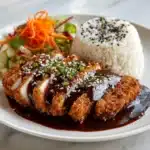
Chicken Katsu Recipe
- Total Time: 30 minutes
- Yield: 4 servings 1x
- Diet: Non-Vegetarian
Description
Learn how to make delicious Chicken Katsu at home with this easy recipe. Crispy breaded chicken served with tonkatsu sauce over steamed rice!
Ingredients
Chicken Katsu:
- 4 boneless, skinless chicken breasts, pounded to 1/2-inch thickness
- Salt and black pepper to taste
- 1/2 cup all-purpose flour
- 2 large eggs, beaten
- 1 1/2 cups panko breadcrumbs
- Vegetable oil for frying
For Serving:
- Cooked white rice
- Tonkatsu sauce for dipping or drizzling
- Shredded cabbage for garnish (optional)
Instructions
- Season and Coat: Season chicken with salt and pepper. Coat in flour, dip in beaten eggs, and coat with panko.
- Fry: Fry chicken in hot oil until golden and cooked through.
- Serve: Rest, slice, and serve over rice with tonkatsu sauce and cabbage.
Notes
- For extra crispiness, double-coat the chicken in egg and panko.
- You can bake or air fry for a lighter version.
- Tonkatsu sauce can be bought or homemade.
- Prep Time: 15 minutes
- Cook Time: 15 minutes
- Category: Main Course
- Method: Frying
- Cuisine: Japanese
Nutrition
- Serving Size: 1 cutlet with rice
- Calories: 490
- Sugar: 3g
- Sodium: 480mg
- Fat: 22g
- Saturated Fat: 4g
- Unsaturated Fat: 16g
- Trans Fat: 0g
- Carbohydrates: 40g
- Fiber: 2g
- Protein: 32g
- Cholesterol: 130mg
